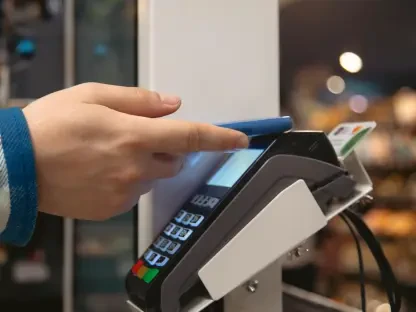In an increasingly digital world, securing your online transactions has never been more important. The rise of e-commerce, online banking, and digital marketplaces has brought unprecedented convenience, but it also comes with its fair share of risks. Cyberattacks, data breaches, and fraud are all too common, leaving consumers vulnerable. One effective way to safeguard your financial data when shopping online is by using virtual credit cards. These digital versions of your regular credit card offer an added layer of protection. Let’s explore how to protect your online purchases effectively through secure virtual credit cards.
1. Select a Card
Before diving into the world of virtual credit cards, the first step is selecting the right card for your needs. Look for a credit card that offers rewards, benefits, and terms that align with your financial goals and budget. It’s important to compare different card options to find one that suits your spending habits and provides the security features you’re looking for. Some cards may offer higher cashback percentages, travel rewards, or lower interest rates. Take the time to review these options, making sure to read the fine print and understand any associated fees. This initial step sets the foundation for a secure and beneficial virtual card experience.
Additionally, consider looking at credit card reviews and user feedback to get a sense of how different cards perform in real-world scenarios. It’s also wise to check if the card issuer supports virtual card generation. Not all cards come with this feature, so ensuring your chosen card offers it is crucial. Once you’ve selected a card that meets your criteria, you’re ready to move on to the next step: applying for the card and setting up your virtual account.
2. Visit Issuer’s Website
Once you have chosen the right card, the next step is to visit the credit card issuer’s secure website to complete the application process. Most credit card issuers have a straightforward online application process that you can access from their website. This process is designed to be user-friendly and typically includes detailed instructions to guide you through each step. By applying online, you can also take advantage of promotional offers that may not be available if you apply through other means.
Begin by navigating to the official website of the card issuer. Look for a section that says “Apply for a Card” or similar. Make sure you’re on a secure connection, indicated by a lock symbol in the address bar and that the URL starts with “https.” Follow the prompts to fill out your application, which will include entering personal information such as your name, address, date of birth, and Social Security number. You’ll also need to provide financial details, including your income and monthly housing expenses. Ensure all the information you provide is accurate to avoid delays or rejection.
After submitting your application, you may receive an instant decision. Some credit card issuers can approve applications quickly, while others might take a few days to review your information. If approved, the next steps will involve setting up your account and accessing your virtual card number.
3. Provide Information
Accurately providing all required information is a fundamental step to complete your application. The issuer will request personal and financial details to assess your creditworthiness and identity. This includes your full name, physical address, date of birth, and Social Security number. Additionally, they’ll ask for your income, employment details, and monthly rent or mortgage payment. Accurate and honest information is critical here, as any discrepancies can delay the approval process or lead to a declined application.
It’s also essential to review the issuer’s privacy policy and data handling procedures before submitting your information. Understanding how your data will be used, stored, and protected can provide you with peace of mind. Many issuers use encryption and other security measures to protect your personal information during the application process. Additionally, some issuers might request additional documents such as proof of income or identification, which you should be prepared to provide if asked.
Once your information is submitted, the issuer will perform a credit check and assess your application based on their internal criteria. This credit inquiry is known as a hard inquiry and may slightly impact your credit score. If everything checks out, you will move on to receiving approval for your card and subsequently accessing your virtual card number.
4. Receive Approval
After submitting your application, the issuer will process your information to determine your eligibility for the card. If approved, you will be given access to a virtual credit card number. This number can usually be used instantly even before your physical card arrives in the mail. Receiving approval often involves a credit check, and if your credit score and financial situation meet the issuer’s criteria, you should have no issues getting approved. The process might take a few minutes to a few days, depending on the issuer.
Once approved, you will receive instructions on how to access your virtual card number. Typically, this involves logging into your online account or a mobile app provided by the issuer. Here, you can find your virtual card details, including the 16-digit account number, expiration date, and CVV. These details can be used just like a physical card for online transactions. The beauty of virtual cards lies in their instant accessibility, allowing you to start using your card for online purchases immediately and securely.
Most issuers also provide options to manage your virtual card settings, such as setting spending limits and expiration dates. This flexibility not only enhances security but also allows you to tailor your credit use to your specific needs. Additionally, some issuers provide notifications and alerts for transactions made with your virtual card, keeping you informed and in control of your spending.
5. Use Responsibly
Using your virtual credit card responsibly is key to maintaining your financial health and ensuring the ongoing security of your online transactions. Always remember to pay your bill in full and on time to avoid interest charges and potential damage to your credit score. Keeping track of your spending is easier with virtual cards as many issuers offer detailed transaction histories accessible via their web or mobile platforms.
It’s also important to monitor your virtual card activity regularly. Look for any unauthorized transactions and report them immediately to your card issuer. The advantage of a virtual card is that if you notice suspicious activity, you can simply cancel the virtual card number and generate a new one without affecting your main account. This makes virtual cards a highly flexible and secure option for frequent online shoppers.
Moreover, take advantage of the financial management tools provided by your card issuer. These tools can help you set and adhere to a budget, track expenses in different categories, and analyze your spending patterns. Using these tools effectively can lead to better financial discipline and more strategic use of your credit.
Other Ways to Protect Yourself When Shopping Online
In today’s digital age, safeguarding your online transactions has become more vital than ever. The convenience brought by e-commerce, online banking, and digital marketplaces is unmatched, yet these advancements come with significant risks. Cyberattacks, data breaches, and fraud are increasingly common, putting consumers’ information at risk. To counter these threats, one effective method to protect your financial information during online shopping is by using virtual credit cards.
Virtual credit cards act as digital versions of standard credit cards but offer enhanced security features. When you use a virtual credit card, you generate a unique card number for each transaction or merchant. This means even if a cybercriminal intercepts your card information, it cannot be used for any other purchase, thereby reducing the likelihood of fraud. Additionally, virtual credit cards allow you to set spending limits and expiration dates, adding yet another layer of security to your transactions.
By using virtual credit cards, you can ensure that your financial data remains safe while enjoying the convenience of online shopping. This extra safeguard is especially useful in protecting against potential data breaches and cyber threats that are prevalent in the digital marketplace. As the world continues to embrace digital transactions, investing in secure payment methods like virtual credit cards has become a necessity to protect yourself from online fraud and maintain peace of mind.









